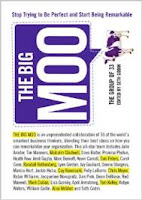I recently completed The Amazon Way by John Rossman, a book that extols the 14 leadership principles that drives Amazon as a company, as well as each and every employee lives and breathes each principle daily. In this book, John uses real life experiences and stories from his Amazon days, I always appreciate such war stories with concrete examples linking back to real-world experience.
These principles resonated a lot with me (I could identify and think of personal experiences/tendencies relating to all fourteen, I wouldn't have minded working in Amazon!), and so I decided to write each principle down so that I can remember them better, even though these principles exist as part of the Amazon Careers site here.
These principles resonated a lot with me (I could identify and think of personal experiences/tendencies relating to all fourteen, I wouldn't have minded working in Amazon!), and so I decided to write each principle down so that I can remember them better, even though these principles exist as part of the Amazon Careers site here.
I find writing things down helps me remember things better than reading does, here's the 14 Leadership principles:
1. Obsess Over the Customer
Leaders at Amazon start with the customer and work backwards, seeking continually to earn and keep the customer's trust. Although leaders pay attention to their competitors, they obsess over their customers.
2. Take Ownership of Results
Leaders at Amazon are owners. They think long term, and they don't sacrifice long-term value for short-term results. They never sat, "That's not my job." They act on behalf of the entire company, not just their own team.
3. Invent and Simplify
Leaders at Amazon expect and require innovation and invention from their teams and always find ways to simplify the processes they touch. They are externally aware, look for new ideas from everywhere, and are not limited by "not invented here" thinking. And they ate willing to innovate fearlessly despite the fact that they may be misunderstood for a long time.
4. Leaders are Right - A lot
Leaders at Amazon are right -- not always, but a lot. They have strong business judgement, and they spread that strong judgement to others through the utter clarity with which they define their goals and the metrics they use to measure success.
5. Hire and Develop the Best
Leaders at Amazon raise the performance bar with every hire and promotion. They recognise exceptional talent, and willingly move them throughout the organisation. Leaders develop leaders and take seriously their role in coaching others.
6. Insist on the Highest Standards
Leaders at Amazon set high standards -- standards that many people consider unreasonably high. Leaders are continually raising the bar and driving their teams to deliver an ever-increasing level of quality. Leaders also ensure that the few defects that elude the quality process do no get sent down the line, and that problems are fixed so they stay fixed.
7. Think Big
Thinking small is a self-fulfilling prophecy. Leaders at Amazon create and communicate a bold direction that inspires results. They think differently and look around corners for big new ways to serve customers.
8. Have a Bias for Action
Leaders at Amazon value calculated risk taking. Speed matters in business. Many decisions and actions are reversible and do not need extensive study. So when you are in doubt, try something -- and take advantage of the opportunities that being the first in the field can offer.
9. Practice Frugality
A leader at Amazon tries not to spend money on things that don't matter to customers. Frugality breeds resourcefulness, self-sufficiency, and invention. No extra points are awarded for headcount or budget size.
10. Be Vocally Self-Critical
Leaders at Amazon do not consider themselves, or their teams, above criticism. They benchmark themselves against the best, and they are proactive about revealing problems or mistakes, even when doing so is awkward or embarrassing.
11. Earn the Trust of Others
Leaders at Amazon are sincerely open-minded, genuinely listen, and examine their own strongest convictions with humility. Their openness enables them to trust those around them -- and to earn the trust of others in return.
12. Dive Deep
Leaders at Amazon operate at all levels, stay connected to the details, and audit them frequently. No task is beneath them, because they know that only a deep dive into the nuts and bolts of a process can really uncover opportunities and solve problems before they become insurmountable.
13. Have a Backbone -- Disagree and Commit
Leaders at Amazon have conviction. They are obligated to respectfully challenge decisions when they disagree, even when doing so is uncomfortable or exhausting; they do not compromise for the sake of social cohesion. But once a decision is made, they commit to it wholeheartedly.
14. Deliver Results
Leaders at Amazon focus on the key outputs for their business and deliver them with the right quality and in a timely fashion. Despite setbacks, they rise to the occasion and never settle.









